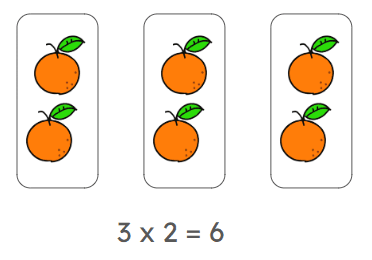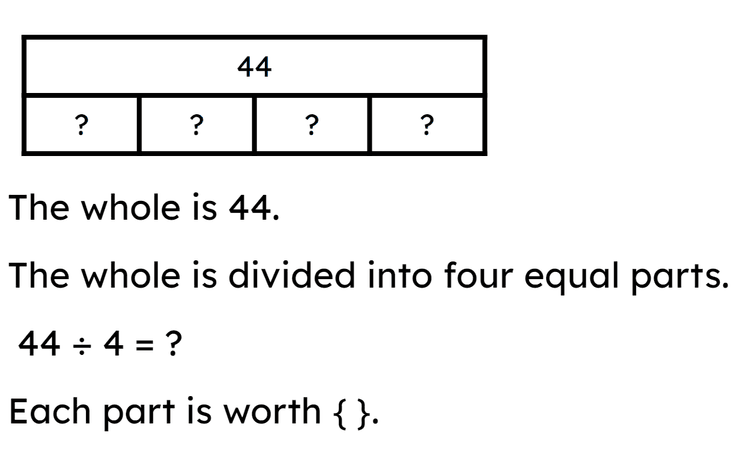Myths about teaching can hold you back
- Year 3
Calculate the value of parts and wholes using understanding of division
I can calculate the value of a part and a whole using understanding of division and knowledge of division facts.
- Year 3
Calculate the value of parts and wholes using understanding of division
I can calculate the value of a part and a whole using understanding of division and knowledge of division facts.
These resources were made for remote use during the pandemic, not classroom teaching.
Switch to our new teaching resources now - designed by teachers and leading subject experts, and tested in classrooms.
Lesson details
Key learning points
- The whole can be a set of objects.
- To calculate the value of a part, we need to divide the whole by the number of equal parts.
- To calculate the the number of equal parts, we need to divide the whole by the value of each part.
- To calculate the whole, we need to multiply the number of equal parts by the value of each part.
- Drawing a bar model helps us to visualise the problem.
Keywords
Divide - When we divide, we split something into equal parts or groups. We use the ÷ symbol to mean divide.
Common misconception
Children may struggle to make connections between division and the value of a part.
Support children to understand and describe what they know from the information given, for example, the whole, the size of a part, or the number of parts. Also, what it is that they are trying to find. Encourage representation as a bar model.
To help you plan your year 3 maths lesson on: Calculate the value of parts and wholes using understanding of division, download all teaching resources for free and adapt to suit your pupils' needs...
To help you plan your year 3 maths lesson on: Calculate the value of parts and wholes using understanding of division, download all teaching resources for free and adapt to suit your pupils' needs.
The starter quiz will activate and check your pupils' prior knowledge, with versions available both with and without answers in PDF format.
We use learning cycles to break down learning into key concepts or ideas linked to the learning outcome. Each learning cycle features explanations with checks for understanding and practice tasks with feedback. All of this is found in our slide decks, ready for you to download and edit. The practice tasks are also available as printable worksheets and some lessons have additional materials with extra material you might need for teaching the lesson.
The assessment exit quiz will test your pupils' understanding of the key learning points.
Our video is a tool for planning, showing how other teachers might teach the lesson, offering helpful tips, modelled explanations and inspiration for your own delivery in the classroom. Plus, you can set it as homework or revision for pupils and keep their learning on track by sharing an online pupil version of this lesson.
Explore more key stage 2 maths lessons from the Calculate the value of a part (fractions as operators) unit, dive into the full primary maths curriculum, or learn more about lesson planning.

Licence
Prior knowledge starter quiz
6 Questions
Q1.Identify the whole amount in this problem. Sofia has 18 grapes and wants to share them between herself and 2 friends. They get 6 grapes each.
Q2.Identify the number of parts in this problem. Sofia has 18 grapes and wants to share them between herself and 2 friends. They get 6 grapes each.
Q3.Match the division expressions to their quotient.
3
4
10
2
5
Q4.Look at the image and equation. What does the 3 represent?

Q5.Look at the image and equation. What does the 2 represent?

Q6.Look at the bar model. What does the 30 represent?

Assessment exit quiz
6 Questions
Q1.When we divide, we split something into parts or groups.
Q2.Look at this bar model and complete the sentence.



